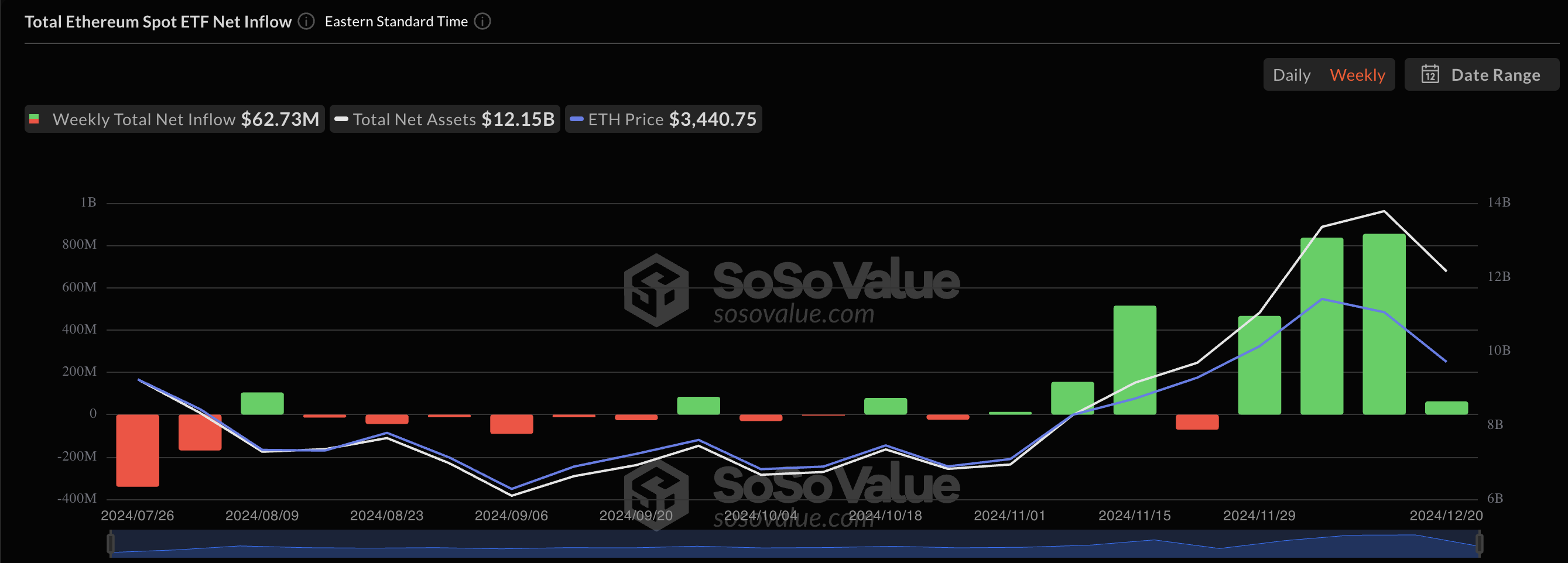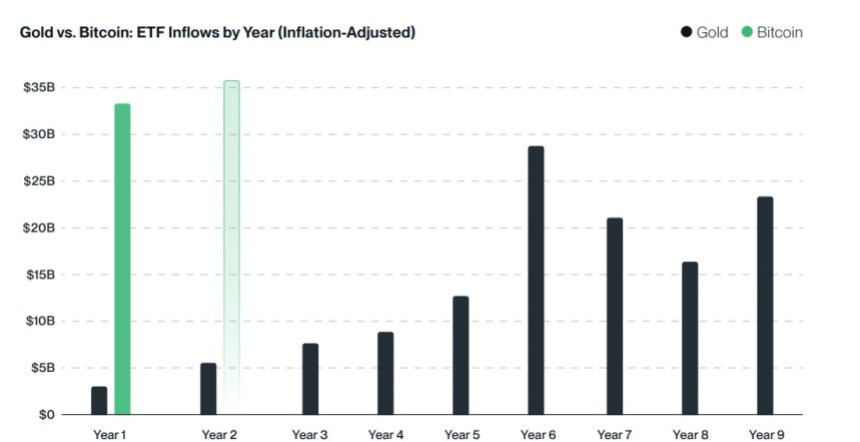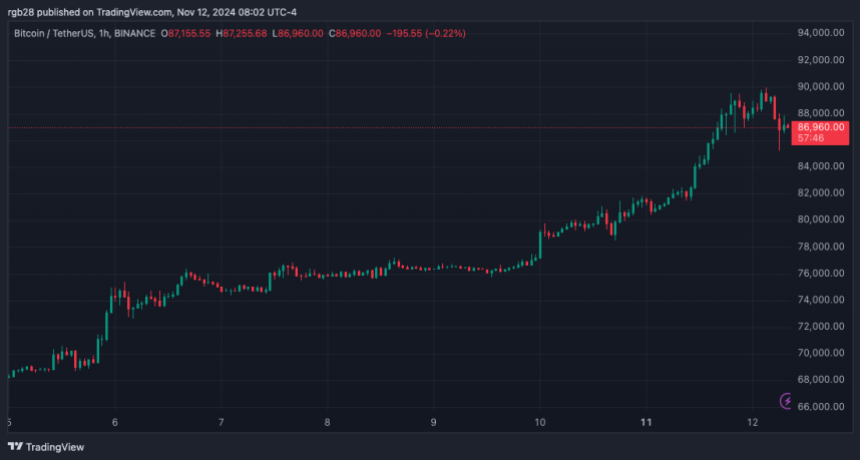The Ethereum price has been a joy to watch in recent weeks after initially struggling to keep pace with other large-cap cryptocurrencies. However, the past week will be a quick one to forget for the crypto market, especially the altcoin, which declined in value by over 12%.
While this price slump experienced by Ethereum has been linked to the US Federal Reserve rate cut, the recent drab performances of the spot ETH exchange-traded funds (ETFs) could also be associated. After a lengthy spell of positive inflows, investor interest in the US-based ETH ETFs seems to be losing momentum.
Spot ETH ETFs Snap 18-Day Positive Inflows Streak
According to data from SoSoValue, the US-based spot Ethereum ETFs logged a total net outflow of $75.11 million on Friday, December 20. This marked the first time the Ethereum funds would be registering back-to-back negative performances.
On Thursday, December 19, the Ethereum exchange-traded funds recorded a total net outflow of $60 million. This single-day performance put an end to the ETH ETF’s 18-day streak of positive inflows and the first negative day in December for the products.
Surprisingly, BlackRock’s Ethereum Fund (with the ticker ETHA) was the only spot ETF that recorded outflows on Friday. According to market data from SoSoValue, the ETHA exchange-traded fund posted nearly $103.7 million to close the week.
Meanwhile, Fidelity’s Ethereum Fund (with the ticker FETH) recorded $12.95 million in net inflow on Friday. Grayscale’s Ethereum Trust (ETHE) and Mini Trust (ETH) were the only other ETFs that registered positive inflows on the day, with $7.51 million and $8.10 million, respectively.

These back-to-back days of negative performances saw a net $135 million flow out of the ETH exchange-traded funds in just two days in the past week. However, the crypto products finished with a weekly total net inflow — for the fourth consecutive week — of $62.73 million.
Similarly, the spot Bitcoin ETFs appear to be losing interest from investors, as most funds recorded outflows to close the past week. The crypto products registered a daily net outflow of approximately $276 million on Friday.
Ethereum Price
As of this writing, the Ethereum price stands at around $3,342, reflecting a 2.4% decline in the past 24 hours. Given their impact on the value of ETH, it might be important for the spot ETFs to return to positive inflows if the Ethereum price is to see any relief.
Featured image from iStock, chart from TradingView














